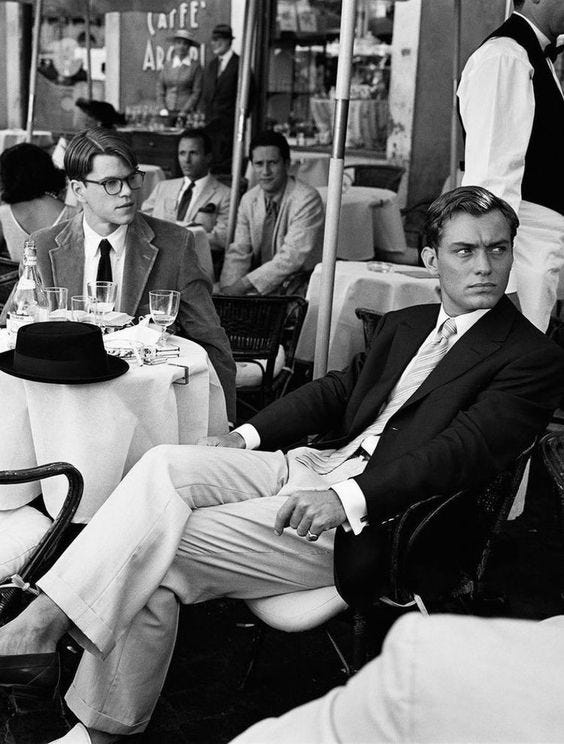I’m not going to tell you where to shop, how to donate your clothes, how to abstain from shopping, or even where to shop sustainably. I’m definitely not interested in making you feel guilty about buying anything on Black Friday, Cyber Week, etc. This is not a lecture about capitalism or consumption. This piece is about how our brains work. What's the psychology behind the joy we derive from shopping? How has shopping attained such a central role in our lives? Let's spill the tea.
Whoever said money can't buy happiness simply didn't know where to go shopping.
- Gertrude Stein
Hunting for the perfect outfit and actually finding it on sale can feel like winning the lottery. A moment of happiness, a well-earned reward. Afterwards, you think, gosh what else can I get on sale? This is the driving force behind consumer psychology, the bedrock of marketing strategies. Often times we are at the mercy of our neurotransmitters. This exploration unveils the subtle dance between marketing and the human brain, particularly during shopping phenomena like Black Friday, Small Business Saturday, and Cyber Monday.

Rewards and a sense of control
We all know that reward is a powerful motivator. Dopamine, the neurotransmitter linked to pleasure and reward, plays a pivotal role in this dynamic. The mere anticipation of a good deal, such as those offered during Black Friday, can trigger a surge of dopamine. The allure of discounts, limited-time offers, and exclusive deals may not just be a matter of rational decision-making but a result of the brain's innate response to the anticipation of reward.
A 2014 study featured in the Journal of Consumer Psychology uncovered that retail therapy brings immediate happiness and also serves as a remedy for sadness. The study suggests that sadness often arises from a feeling that external circumstances dictate the outcomes in our lives, eroding our sense of personal control. Engaging in shopping, with so many choices and potential outcomes, has the remarkable ability to restore a sense of personal agency and autonomy. The act of making shopping choices and witnessing tangible results can be a potent antidote for sadness.
Clinical psychologist Scott Bea, PsyD. suggests there’s actually a lot of psychological and therapeutic value when you’re shopping. Dr Bea says that the dopamine surge begins even before you press add to cart.
“Dopamine increases your desire to continue to seek out things that make you feel good (hence retail therapy being a favorite go-to!). Some think the dopamine is released when you actually get a reward or purchase an item, but it begins before you make a purchase as you’re delighting in all the possibilities,”
I am not endorsing maxing out credit cards or shopping as an easy fix for anxiety, but it is okay to admit that you want — or need — that dopamine fix. It is pretty human. Understanding my actions and desires from a biological perspective has been a personal game-changer. So, if you are in for some science, keep reading.
Some basic brain bits

When one is shopping, online or in person, different parts of your brain start to light up. Some of these brain zones bring joy, while others can make you feel a bit of pain. This type of activation can also reveal that shopping can become addictive. I’m not making a judgment here, just highlighting what actually happens.
When you’re shopping, the nucleus accumbens, the insula, and the mesial prefrontal cortex fire up. The nucleus accumbens, known for its role in the brain's reward system, gets triggered when you eye something you really want. On the flip side, the insula, often linked to pain and negativity, jumps into action when you're thinking about the price tag. Meanwhile, the mesial prefrontal cortex, the brain's problem-solving guru, comes into play when you're weighing the value against the cost.
It's like a rapid-fire exchange between getting excited about a reward, feeling a bit of pain (especially when you check the price), and doing some quick math in your head. This brain dance seems to be a common thing we all share.
But here's the twist—everyone's brain doesn't vibe with shopping in the same way. The intensity of activation in each brain area can differ from person to person. Someone who's not up for spending loads might feel the insula firing up more, while someone who sees shopping as a form of emotional therapy might get a bigger hit in the nucleus accumbens. Smart shoppers could have a well-developed mesial prefrontal cortex (the brain's problem-solving guru). And, of course, the amount of brain activity can change based on things like how badly you want the item, the situation you're in, and the cost involved.
A sensory escape

While your brain is busy calculating reward vs price, it is also reacting to intense visual input. Ads and fashion editorials set in beautiful places are fashion brain food. So even before thinking of buying something, I already have the hypothetical holiday in mind where I’ll be wearing the item I saw on sale. Crazy, right?
Visualization acts as a means to divert attention from anxiety, with shopping being a notable source of sensory stimulation. Dr. Bea observes,
"The introduction of a new scent, vibrant lights, and vivid displays collaborates to construct an imaginative, sensory experience that has the capacity to momentarily transport us from our own reality." This phenomenon isn't confined to brick-and-mortar stores; it transcends to online shopping, where carefully curated products ignite our imagination, allowing us to picture ourselves in delightful scenarios.

Why Shopping Is So Central To our Lives
The act of buying something is not only an individual behavior. It’s become more than a transactional activity; it's a cultural, social, and personal phenomenon deeply intertwined with our daily lives. Here is the non-shopping list the title promises, a list of reasons why shopping has become so central:
Cultural Influence: In many societies, shopping has become more than a practical activity; it's a cultural experience. It's embedded in celebrations, traditions, and societal norms ( i.e. wedding gifts, religious festivals).
Social Connection: Shopping is often a social activity. Whether it's a shopping trip with friends or family or discussing recent purchases with colleagues, it serves as a means of social connection. The act of sharing shopping experiences can contribute to a sense of belonging and shared identity.
Personal Expression: What we wear and surround ourselves with is often a form of self-expression. Shopping allows individuals to curate their personal style, shaping how they present themselves to the world. The quest for unique and expressive items drives people to engage in shopping regularly. (I’ve written about this before, here)
Retail Therapy: Shopping has been linked to emotional well-being. Retail therapy, or the act of shopping to improve one's mood, is a real phenomenon. People often turn to shopping as a way to cope with stress, and boredom, or to uplift their spirits.
Economic Influence: In many economies, consumer spending is a significant driver. Retail and commerce play a crucial role in economic growth, and the promotion of shopping as a desirable and necessary activity is reinforced by advertising and marketing strategies.
Convenience and Accessibility: We all know online shopping has changed the world completely. This ease of access has contributed to the increased centrality of shopping in daily life.
The bottom line is that we are all just human beings who occasionally look for quick fixes that makes us feel better. Sometimes that can be online shopping, but not always. After all, you might actually need that $275,000 Hermès Sac Faubourg Alligator skin Birkin bag (you can get $100 off if you sign up to their newsletter too!). No judgment, no guilt trip here. I’m on the same boat, and find that less is always more. But, fashion is just too fun to avoid.

Fatally Yours,
Betsy Cohen





Thanks for sharing @Marc Arginteanu 👍🏼👍🏼